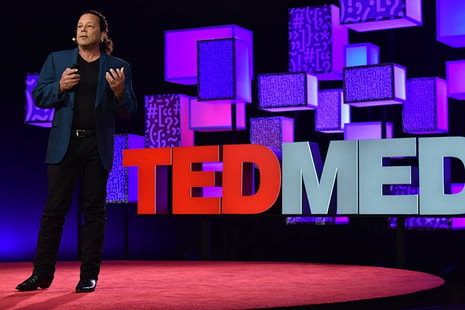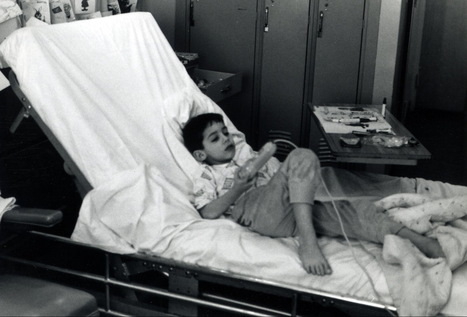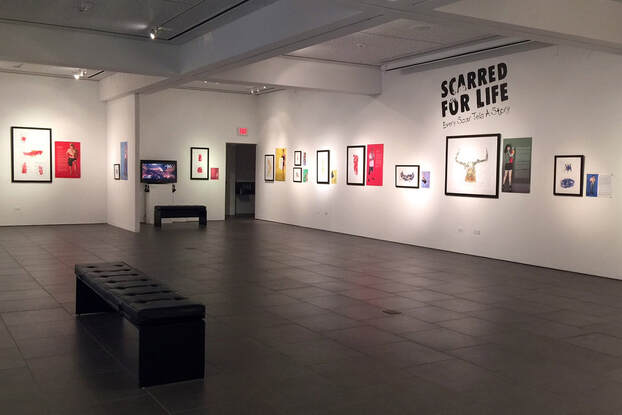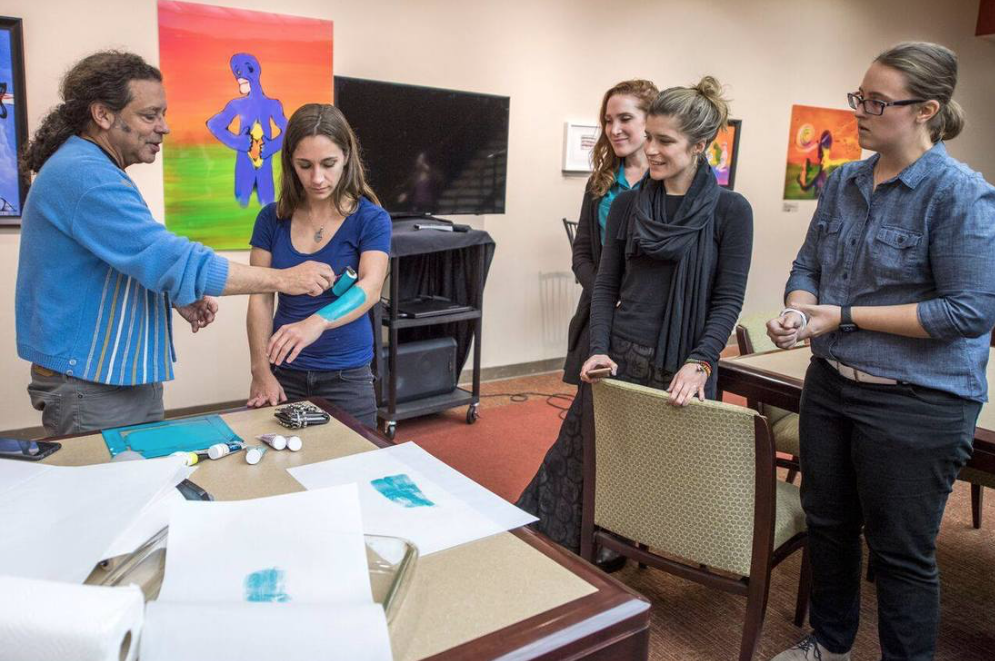"Scarred for Life"
|
A Patient Life
|
|
Curating for Hospitals,
Medical Schools, and other nontraditional spaces As the Resident Artist at UCLA’s Geffen School of Medicine, Meyer has extended his curating knowledge to art installations in nontraditional places.
In this talk, Meyer discusses the benefits and drawbacks of curating in non-art spaces, such as hospitals, non-art schools, and other public spaces. The lecture begins with Meyer’s childhood experiences of disease and art making and how his artwork changed as treatments were developed for his disease. He describes the origin of his “Scarred for Life” art project, the progression of his artistic vision, and the broadening diversity of his target audience. In explaining his role as an Artist in Residence, Meyer delineates the difference between art therapy and art about medicine and health. The lecture also includes logistical information about curating art shows in non-art spaces such as hospitals. He explains potential insurance and installation issues, the benefit of artist lectures, and how such shows can be promoted. Additionally, he talks about the power of a large collection of work (e.g., his “Scarred for Life” project) and about creating artwork that is non-salable. He concludes with information on his efforts to reach a broader audience through the use of social media, self-publishing, twitter and videos. Throughout the presentation, Meyer illustrates his points by showing art created by artists living with chronic disease and/or disability. Audience Benefits/Takeaways Hospital administrators/other professionals: an understanding of the positive effects of exhibiting visual art in their public spaces. Curators: the steps to follow when curating a show for non-artists in non-art spaces; information on curating for topical audiences instead of collectors. Students: insight on curation outside of the art world. |




